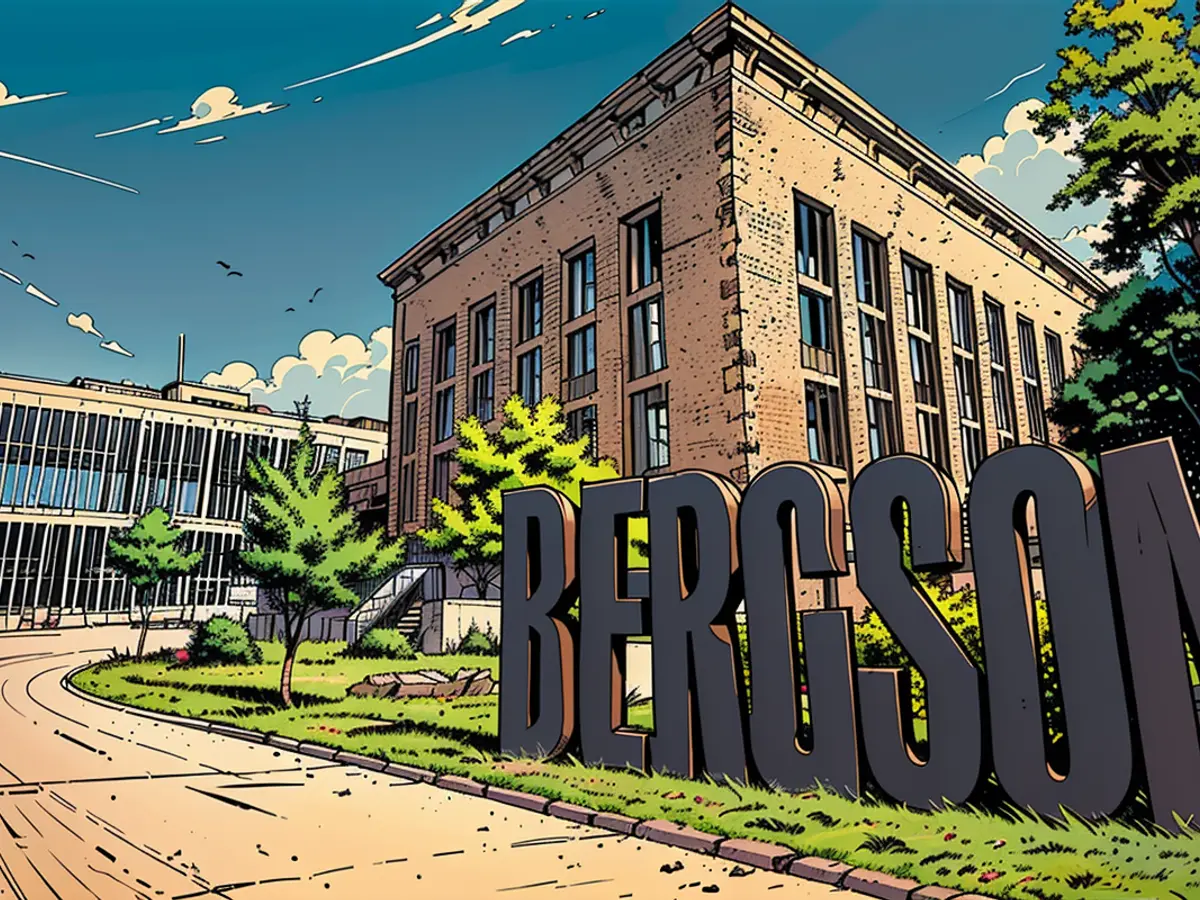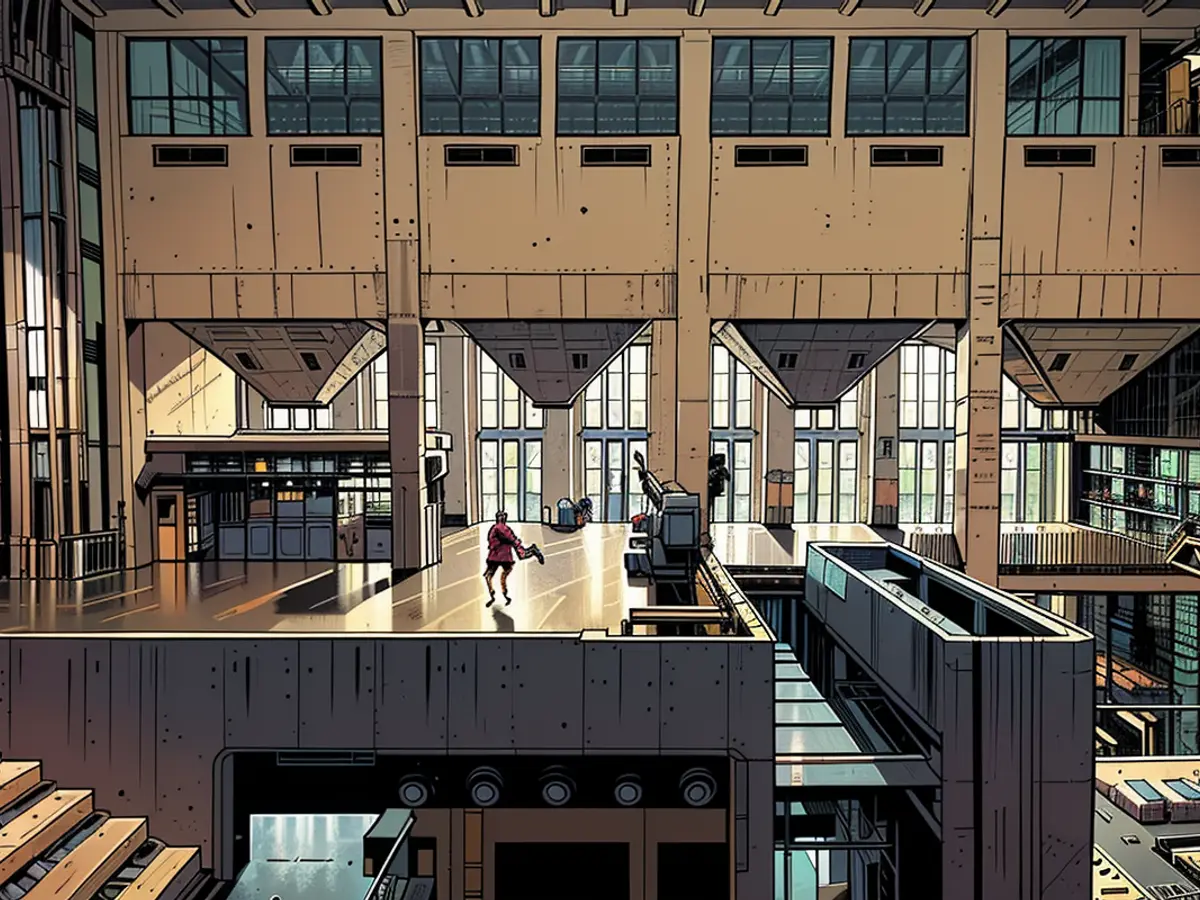Are we the strangers? Or is the world strange?
"The Eagles sang 'there's a new kid in town' decades ago.", the "Eagles" already sang in Munich. Now, there are several "new kids in town" all to be found at the new Bergson Kunstkraftwerk in Munich. ntv.de has taken notice of it.
Breaking down barriers, taking on the fear of the unknown, eliminating the elite - that's what Johann König has achieved with his gallery in Berlin. In a former church, St. Agnes, young and old, famous and previously unknown artists are housed. Visitors come from far and wide, with or without an artistic background, as St. Agnes also offers a gallery shop, similar to those in museums, where one can already become knowledgeable.
"We would have loved to have a church in Munich, but it didn't work out", Johann König tells ntv.de. Instead, something else: the Bergson Kunstkraftwerk. "The architecture is spectacular", finds König. "And after the consecration of the Silos and the 25-meter-high Atrium, we are now expanding our gallery by an additional 1600 square meters. This size allows for multiple exhibitions at the same time. That means more stage for more artists. As a result, we can offer and sell even more art."
Well and good, but do we really need that in Munich? Imagine for yourself: On July 12, the Bergson Kunstkraftwerk opens its doors with a group exhibition. Nearly 2000 square meters of exhibition space are available. Under the name "König Bergson" and in partnership with the König Galerie, visitors can now see how artists approach the themes of Identity and Transformation in their works. "The current time is characterized by rapid change and constantly raises the question of Identity. We want to pick up on this momentum in society and examine the metamorphoses through the eyes of artists," says König.
New and Familiar
In the former coal silos and the Atrium, the solo exhibition "Every Moment is a New Moment" by the artist Jeppe Hein can also be visited. Artworks that provoke reflection and introspection, reflected air balloons, and other works await visitors. Benedikt Müller, Director of Visual Arts & Academy at the Bergson Kunstkraftwerk: "The title of the exhibition describes the feeling we have every day when entering the Bergson - everything feels completely new and yet familiar."
On the centenary of his death, this exhibition is also inspired by Franz Kafka and deals with his research on Identity and Transformation in a constantly changing and threatening world. It shows how Identity is built in various ways and ways. Identity is presented as a constantly changing and unstable construct that artists have questioned since time immemorial. Kafka's style is difficult to classify, but perhaps it is precisely this unpredictability and incomprehensibility that makes his work so captivating 100 years after his death.
The exhibition does not seek direct references or interpretations of Kafka, nor does it aim for a art historical analysis. Instead, the exhibition is inspired by the aura of Kafka's work, the feeling of tireless search, the attempt to understand the world, and a process that often involves a certain detachment and alienation.
On four floors, works by nearly 100 artists are presented. The exhibition is divided into four thematic areas according to floors: On the first exhibition level, themes of identity in the context of national and cultural borders are often explored. Works by artists such as Esra Gülmen and Bjarne Melgaard draw attention to gender and sexual identity. While Gülmen deals with censorship in her native Turkey, Melgaard's works reflect his personal experiences. Here, an attempt is made to understand the depicted people and to better understand others and oneself. Some direct references to Kafka and his engagement with the theme of identity can be found in the works of FLATZ, David Černy, and Volker März.
On the second level, works are presented that are connected to each other through a specific sense of time and history. The works deal with the concept of time and the processing of the past. The theme of historical trauma is continued, for example, with works by Karl Horst Hödicke, Anselm Kiefer, and a new diptych by Rainer Fetting, which depicts ghosts at the (Berlin) Wall. Another example of an artist who deals with fates from past eras is Gian Maria Tosatti: His installation includes a real love letter from a woman from the early 20th century, who was committed to a psychiatric clinic due to her homosexuality.
Gender and body are central themes of the third exhibition level, while metamorphosis and transformation of materials determine the fourth exhibition level: Here, historically significant positions from Isa Genzken, Lili Reynaud-Dewar, or Judith Hopf are presented. The exhibition ends with the poetic image of the anonymous astronaut by Nicole Giesa. In recent years, she has developed a photographic series dealing with alienation, isolation, and loneliness. Her astronaut seems to ask: "Are we the strangers, or is the world strange?"
This question can be answered from July 12 in Munich's new "Place-to-be" for art, culture, culinary and events. After dependencies or pop arts in Mexico City, Vienna, Tokyo, Monaco, or Seoul, the gallery KÖNIG now shows in Munich what began in Berlin.
"Metaphor To Metamorphosis" is on view until November 17 at Bergson Kunstkraftwerk 2, (formerly Rupert-Bodner-Str. 3-5), in 81245 Munich.
The new Bergson Kunstkraftwerk in Munich is hosting an exhibition titled "Metaphor To Metamorphosis," showcasing works that explore themes of Identity and Transformation, inspired by Franz Kafka's aura and style. This exhibition is a part of Johann König's expansion of his gallery, which now occupies an additional 1600 square meters in the former coal silos and Atrium.
Post-expansion, the Bergson Kunstkraftwerk in Munich has become a hub for contemporary art, just like the König Galerie in Berlin. This new "Place-to-be" for art, culture, culinary, and events is following in the footsteps of other successful galleries in Mexico City, Vienna, Tokyo, Monaco, or Seoul that were previously under Johann König's direction.







